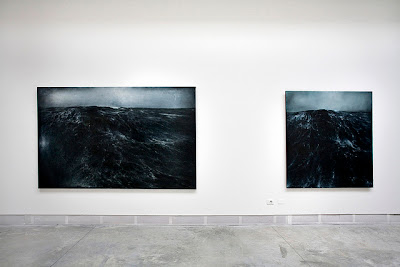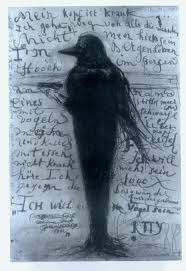The collective work of Thierry De Cordier is most prominently dark, not just in subject matter, but in shade as well. The dramatic and isolated half-man, half-bird figure that composed his 1988 sculpture Lijdensvanger , was so troubling to inhabitants of the village of Puycelsi in the South of France where it was installed, that it was destryed in the middle of the night, thrown over the town walls. In the seascape serie that he began in 2011, De Cordier renders waves, icy peaks, and skies in frigid, overcast tones, as if sympathetic to their coldness and severity. His Works appear as intense and strange as the revelations that occur only upon surfacing from deeply personal explorations.
Le opere di Thierry De Cordier sono per lo più cupe, nei soggetti e nelle atmosfere. La figura per metà uomo e per metà uccello, drammatica e isolata, che compone la sua scultura Lijdensvanger (1988) era così inquietante per gli abitanti di Puycelsi, il villaggio nel sud della Francia dove era stata installata, che venne distrutta nel cuore della notte e gettata dalle mura della cittadina. Nella serie di paesaggi iniziata nel 2011 e presentate alla 55° Biennale di Venezia, De Cordier dipinge vedute marine, vette innevate e cieli dalle tonalità gelide e cupe: i dipinti sembrano pervasi dalla stessa algida austerità della natura che ritraggono. Le sue opere hanno la forza di rivelazioni improvvise, in cui le immagini affiorano come ricordi rimossi ma presenti in ognuno di noi.









